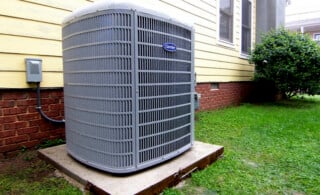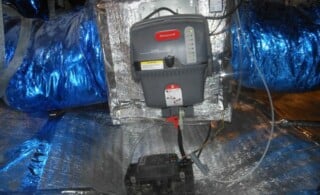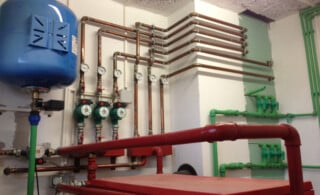
Air conditioning is an invaluable home installment that most Americans can’t live without. The first time you live in a place where the air conditioner breaks down is an experience you probably won’t forget. Quality air conditioners (either window units or central air) are crucial to maintaining a consistently cool home, and these air conditioners deserve to be protected from undue harm and stress.
Types of Air Conditioner Covers
- Dust Covers: This is the cheapest air conditioner cover out there. You might be able to find this cover for $20 or less. As you might imagine, these covers protect your air conditioning unit from dust. This may reduce the maintenance on your unit and colored varieties may match the room’s decoration, but these covers do little else.
- Weather Covers: Weather covers (also called weatherizing covers) are made from specialized plastic or metal and protect your outdoor units from the harsh winter weather. This should enable you to leave your air conditioning unit in your window year round and eliminate the need to take it down and store it.
- Insulating Covers: These covers create an airtight seal in the gaps around your air conditioning unit. This prevents the winter air from infiltrating your home through the window opening during the winter. Many quality covers function both as insulating and weatherizing covers. This air conditioner cover is, naturally, more expensive than simple dust covers. The dimensions and performance of these covers affect how expensive they run.
Ready to start your air conditioning cover?
Find ProsAir Conditioning Vent Covers
If you have central air installed in your home, you’re probably not worried about an air conditioner cover, but central air requires a system of ductwork to disseminate cool air throughout your home. These ducts, as you know, end at the vents present throughout your home. While your central air may not need a cover, these vents do. You probably already have standard covers on these vents, although specialized vent covers may improve your home decorating and/or help the vent circulate the air more efficiently.Even more important than vent covers, however, is the duct system itself. If you haven’t had your ductwork cleaned in the past few years, your ducts have probably gotten dirty. You should check air filters and the areas near the air conditioning vent outlets every year, but you should still have a professional cleaner come in (they have specialized, high power duct cleaning equipment) and have your system completely flushed. Without proper vent and duct maintenance, you’re running the risk for mold and dust allergies, as well as a decreased lifespan for your central air conditioning.
Air Conditioning Safety, Efficiency, and Maintenance
Air conditioner covers are nifty items that will allow your cooling system to run more smoothly, no doubt it. But they’re not a silver bullet that will transform your comfort level or your utility bills. You get what you pay for and $50 covers are a great place to start, but you should at least consider larger upgrades to your air conditioning system. Many of these upgrades will have a more profound impact than a simple air conditioning cover and still won’t resemble the cost of a complete cooling system overhaul.
For an example, let’s return to your ductwork for a moment. Besides duct cleaning, an evaluation of your duct insulation is a great idea. If cooled air must pass through a warm attic on its way to various rooms, your air conditioner will have to work a lot harder than it needs to. Adequate duct insulation will outperform most air conditioning covers. Nor should you use these covers as an excuse to ignore other energy-efficiency and maintenance solutions. Ceiling fans, effective use of daylighting, and window treatments are necessary for cost-effective and time-effective energy-efficiency upgrades. Periodic inspections, air filter replacements, and close monitoring are all necessary components of air conditioning maintenance whether or not you use dust/weather covers.
 Air Conditioner Condenser Coil Costs, Repairs & Replacements
Air Conditioner Condenser Coil Costs, Repairs & Replacements  Whole House Humidifiers
Whole House Humidifiers  Choosing Green: Boilers and Radiator Heating Systems
Choosing Green: Boilers and Radiator Heating Systems  Consider Wood-Burning Furnaces
Consider Wood-Burning Furnaces  Outdoor Heaters: a Refuge from the Cold
Outdoor Heaters: a Refuge from the Cold 

Are You Familiar With This Topic? Share Your Experience.